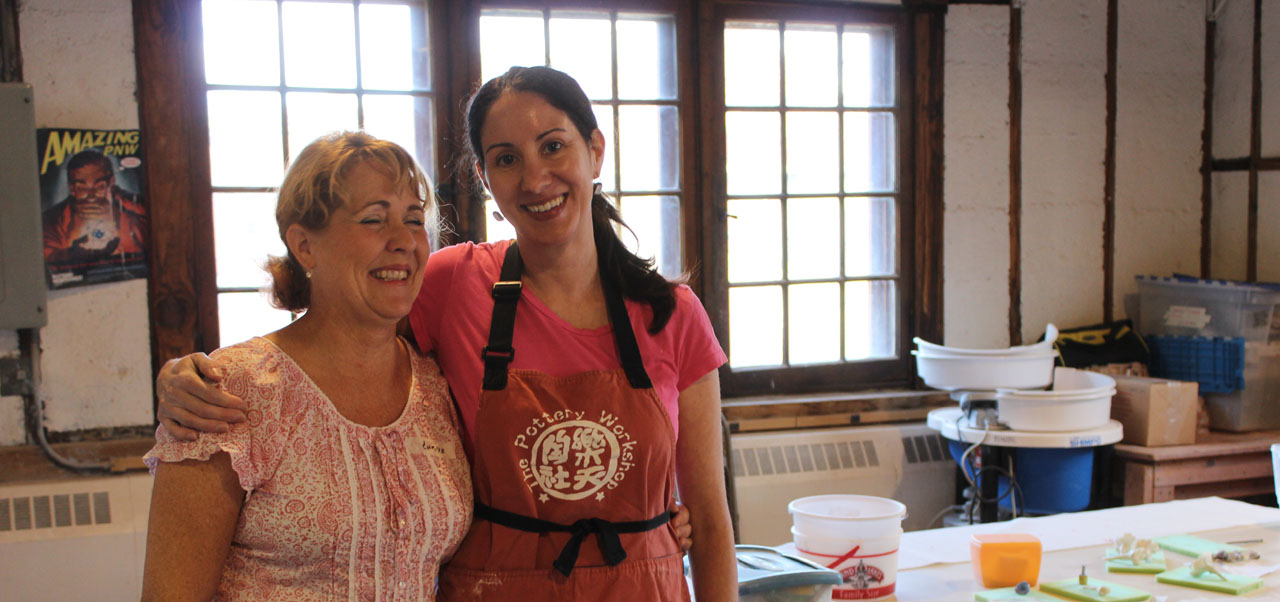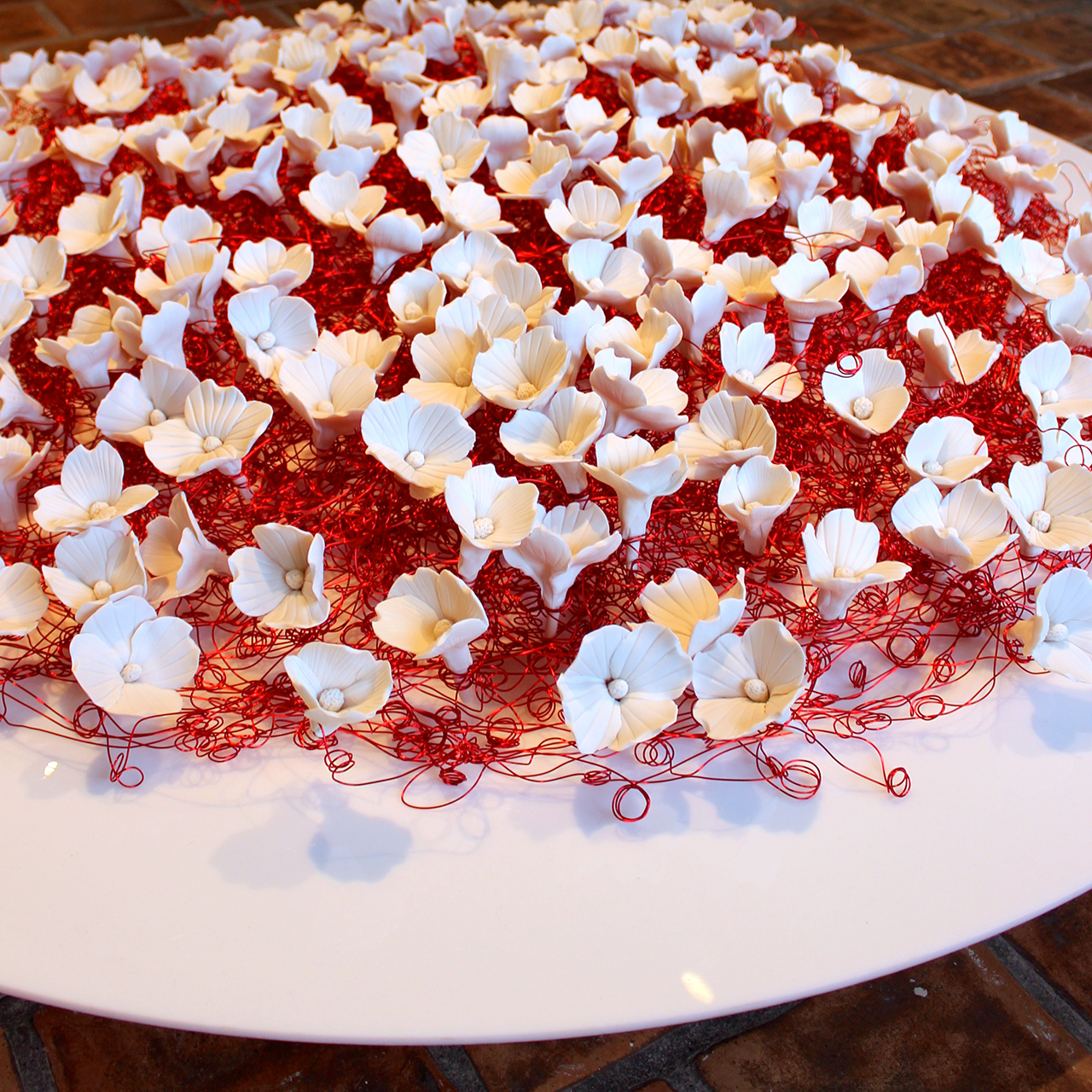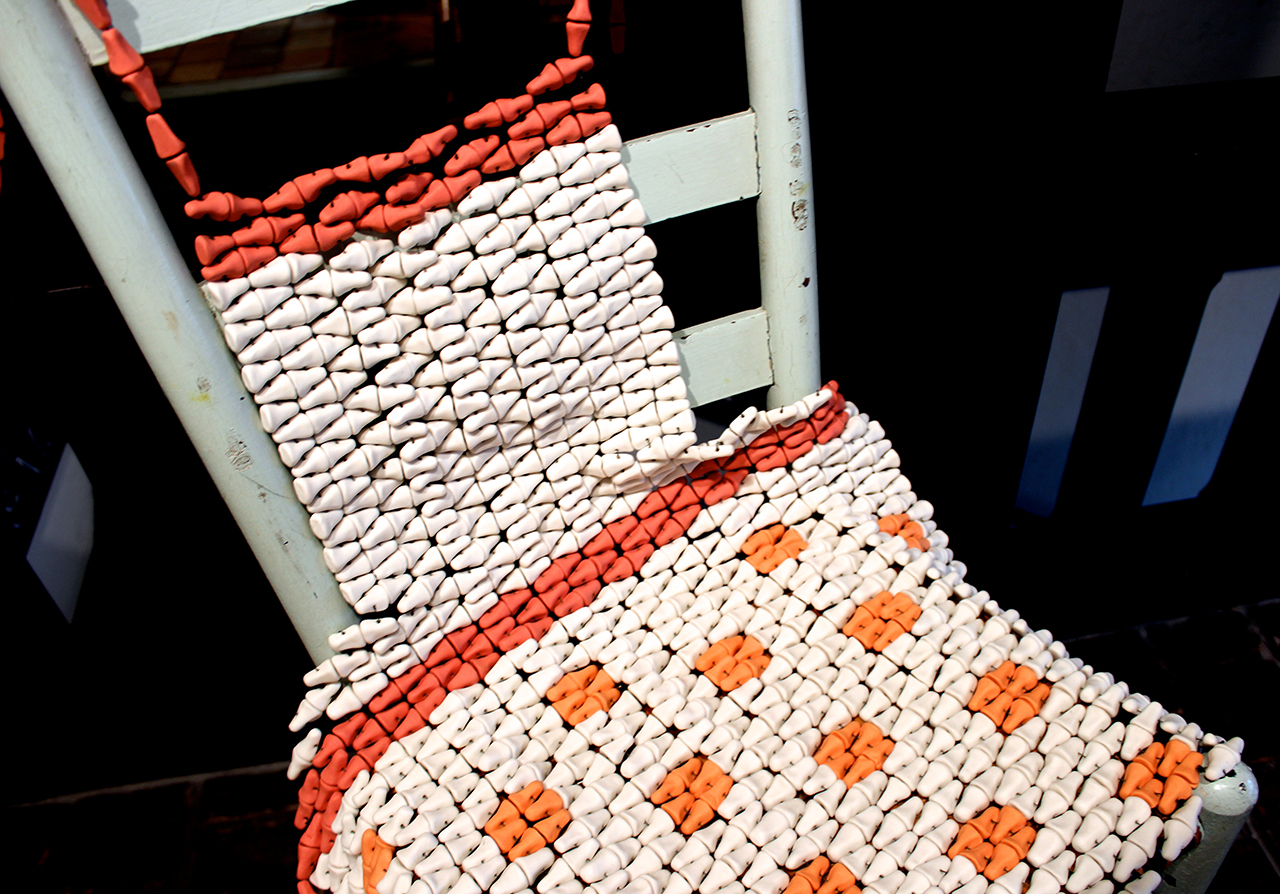
Detroit pottery center uses ceramics to build community and push boundaries in contemporary art
Photo: Pewabic Director of Programs Chrys Bonnay-Lewis and artist Blake J. Williams.
This post has been updated to correct the date of the Knight Arts Challenge announcement to Nov. 9.
Chrys Bonnay-Lewis, the director of programs at Pewabic in Detroit, is determined that the organization be known not only for its historical roots as one of city’s oldest businesses, and not only for its unusual glazes, which have made Pewabic tiles a local sign of interior design distinction. Bonnay-Lewis hopes Pewabic will also be recognized for promoting and advancing ceramics as a contemporary art medium.
Pewabic is one of 70 finalists in the 2015 Knight Arts Challenge Detroit, seeking funding to create a portable ceramics lab. The idea is to take a movable kiln to neighborhoods around the city, enabling participants to create raku pots on their own turf. This is an ambitious outward extension of Pewabic’s Education Studio, which recently hosted a guest artist workshop on Sept. 19. The event featured artist and Michigan State University Associate Ceramics Professor Blake J. Williams, who demonstrated the traditional flower hand-molding techniques she learned in China.

Blake J. Williams, “Resilience II.”
Williams’ exquisite, unglazed porcelain flowers are featured heavily in Pewabic’s current show, “Timeless,” which opened in Pewabic’s upstairs gallery space on Sept. 18 and runs through Oct. 25. In addition to Williams’ labor-intensive and breathtaking displays, the show also features the work of A. Blair Clemo, assistant professor of Craft and Material Studies at Virginia Commonwealth University. Both artists seek to make statements about identity and the tension between ceramics as a means of fabricating use objects versus contemporary art subjects.

Blake J. Williams, “Nourish.”
Williams not only generously demonstrated her techniques for hand-building flowers, but guided the group through a detailed gallery tour, which included consideration of her strongly conceptual works, “Gammy’s Runner, Great Mother’s Table” and “Nourish.” Each of these pieces is assembled out of hundreds of individually molded porcelain finger bone segments, wired together to form intricate patterns that manifest as a lace table runner and a patterned apron hanging over a chair, respectively. Deeper consideration of the concept of “handmade” or “working one’s fingers to the bone” could not be avoided as Williams described the incredible process of assembling these works, sometimes over the course of multiple years.

A work by A. Blair Clemo, showing the intersection of classical or decorative ceramic, rough hand-modeling and industrialized pottery.
Clemo’s body of work takes another tack, demonstrating first his capacity to produce use objects in the style of classical European plates and teacups (for example), and then his strategic violation of these forms with rough interior surfaces, visual puns with tongue-in-cheek glazing, chaotic slashes into to the pre-fired clay, and disruptions in the finishing patterns. Just as Williams questions the identity of ceramics as use objects by removing their functionality, so Clemo seems to be aggressively questioning our expectations for a plate, urn or teacup. In one piece, he assembles a golem of a drinking vessel, half standard-issue white coffee mug, half exquisitely detailed classical vessel, with a rough, hand-molded interior. His playful disruption of traditional ceramics is all the more stark in contrast to “Tureen,” a piece that unequivocally demonstrates his ability to create breathtakingly aesthetic compositions.
For Pewabic and each of these artists, the imperative to continue to push the edge of ceramics in the art scene–and the lives of Detroiters–is clear.
The winners of the 2015 Knight Arts Challenge Detroit will be announced Nov. 9.
Recent Content
-
Artsarticle ·
-
Artsarticle ·
-
Artsarticle ·
